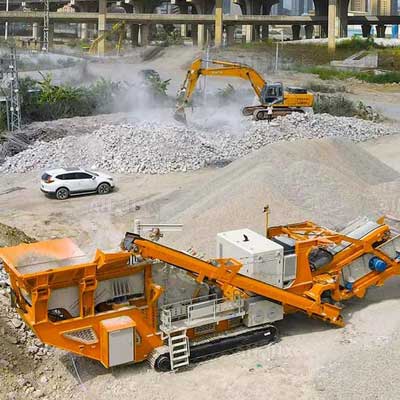


Learn how rock and aggregate crushers transform raw materials into essential infrastructure components for construction projects.
In the world of construction, rock and aggregate crushers are the unsung heroes that shape the backbone of our infrastructure. These machines are pivotal in transforming large boulders into smaller, usable materials that form the foundation for everything from highways to buildings. But understanding the role of these crushers goes beyond simply recognizing their importance in material production. It involves a deeper dive into the technology, applications, and long-term impact they have on construction projects worldwide. In this article, we will explore how these aggregate crushers work, the types available, and their essential role in the construction industry.
At their core, rock and aggregate crushers serve one simple purpose: to break down large rocks into smaller, manageable pieces for use in various construction applications. This process is crucial for producing aggregates that are used in everything from road construction to concrete production. Depending on the material being processed and the desired end-product, crushers can break down rock into a variety of sizes, ranging from fine particles to larger aggregates that can be used as base material.
Rock and aggregate crushers come in a variety of types, each suited for specific applications. The three most common types are jaw crushers, cone crushers, and impact crushers, each utilizing different methods to break down material.
Jaw crushers are typically the first stage of crushing in a material processing line. These crushers use a compressive force, with one jaw moving against a fixed jaw to break large rocks into smaller pieces. Jaw crushers are particularly effective for coarse crushing and are often used in primary crushing applications where the material is larger and more abrasive. Their ability to handle tough materials makes them a standard choice in mining and aggregate production.
Cone crushers operate on the principle of compression and are widely used for secondary and tertiary crushing. These crushers have a conical head that rotates within a bowl-shaped arrangement, applying both pressure and shear forces to break down the rock. They are often used to crush medium to hard materials and produce finer, more uniform aggregates, making them essential for refining material into specific sizes.
Unlike jaw and cone crushers, impact crushers break down rocks through high-speed impact forces. The material is fed into a high-velocity rotor, which throws the material against a hard surface, causing it to fracture. Impact crushers are ideal for producing aggregates with a more cubical shape, which is desirable for certain construction applications, such as concrete production.
The importance of rock and aggregate crushers extends far beyond their function in material processing. These machines are crucial to the efficient and cost-effective development of infrastructure. By transforming raw rock into usable aggregate, crushers provide the building blocks for roads, buildings, and other essential structures. Without crushers, the construction of modern infrastructure would be virtually impossible, as raw materials like granite, limestone, and basalt would be difficult to handle and process into the needed forms.
Crushers contribute to project efficiency in multiple ways. By processing rock on-site, they reduce the need for transporting material, lowering fuel costs and minimizing environmental impact. Additionally, they help reduce the time required for material preparation, allowing construction projects to proceed at a faster pace. The ability to produce aggregates in various sizes and grades further ensures that materials meet the specific requirements of a given project.
Modern rock and aggregate crushers are also designed with sustainability in mind. Many crushers are built to minimize waste by ensuring that nearly all the material is used. Additionally, crushers reduce the environmental impact by eliminating the need to transport materials long distances, which decreases fuel consumption and lowers the carbon footprint of construction projects. This makes crushers a vital component in the ongoing efforts to make the construction industry more sustainable.
